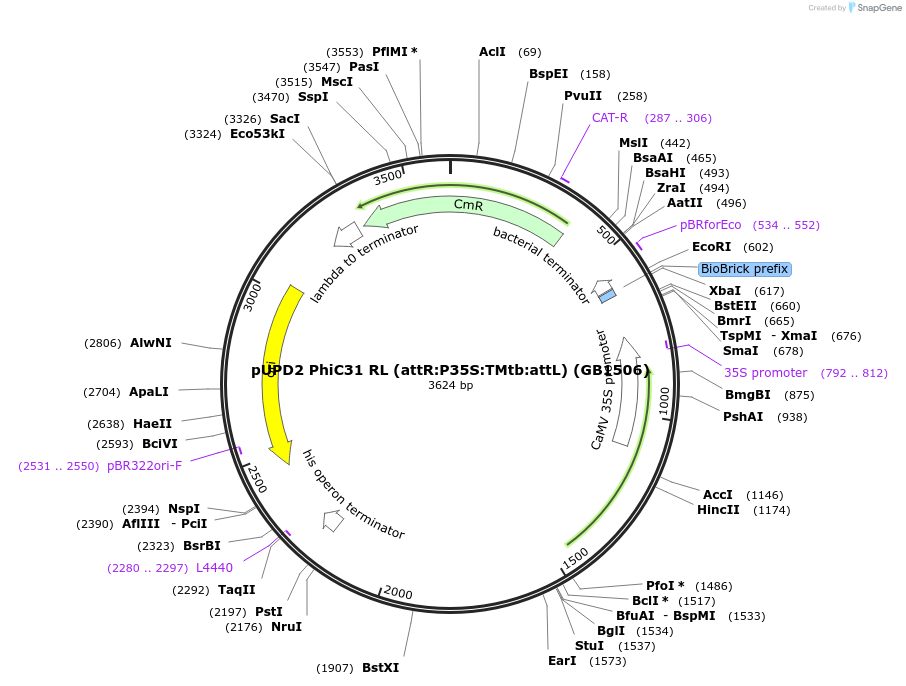pUPD2 PhiC31 RL (attR:P35S:TMtb:attL) (GB1506)
(Plasmid
#160582)
-
Purpose35S promoter inverted sequence and the Mtb terminator flanked by two opposing PhiC31 site-specific recombination sites (attR and attL)
-
Depositing Lab
-
Sequence Information
Ordering
| Item | Catalog # | Description | Quantity | Price (USD) | |
|---|---|---|---|---|---|
| Plasmid | 160582 | Standard format: Plasmid sent in bacteria as agar stab | 1 | $89 | |
Backbone
-
Vector backbonepUPD2
-
Backbone manufacturerself-made; derived from the BioBrick assembly plasmid pSB1C3
-
Vector typeSynthetic Biology
Growth in Bacteria
-
Bacterial Resistance(s)Chloramphenicol, 25 μg/mL
-
Growth Temperature37°C
-
Growth Strain(s)DH5alpha
-
Copy numberHigh Copy
Gene/Insert
-
Gene/Insert nameattR:P35S:TMtb:attL
-
SpeciesSynthetic
-
Insert Size (bp)1522
-
MutationBsaI and BsmBI sites removed
Cloning Information
- Cloning method Restriction Enzyme
- 5′ cloning site BsmBI (destroyed during cloning)
- 3′ cloning site BsmBI (destroyed during cloning)
- 5′ sequencing primer gctttcgctaaggatgatttctgg
- 3′ sequencing primer cagggtggtgacaccttgcc
- (Common Sequencing Primers)
Terms and Licenses
-
Academic/Nonprofit Terms
-
Industry Terms
- Not Available to Industry
Trademarks:
- Zeocin® is an InvivoGen trademark.
Depositor Comments
Compatible with GoldenBraid; insert can be released with BsaI
These plasmids were created by your colleagues. Please acknowledge the Principal Investigator, cite the article in which the plasmids were described, and include Addgene in the Materials and Methods of your future publications.
-
For your Materials & Methods section:
pUPD2 PhiC31 RL (attR:P35S:TMtb:attL) (GB1506) was a gift from Diego Orzaez (Addgene plasmid # 160582 ; http://n2t.net/addgene:160582 ; RRID:Addgene_160582) -
For your References section:
A memory switch for plant synthetic biology based on the phage varphiC31 integration system. Bernabe-Orts JM, Quijano-Rubio A, Vazquez-Vilar M, Mancheno-Bonillo J, Moles-Casas V, Selma S, Gianoglio S, Granell A, Orzaez D. Nucleic Acids Res. 2020 Apr 6;48(6):3379-3394. doi: 10.1093/nar/gkaa104. 10.1093/nar/gkaa104 PubMed 32083668



